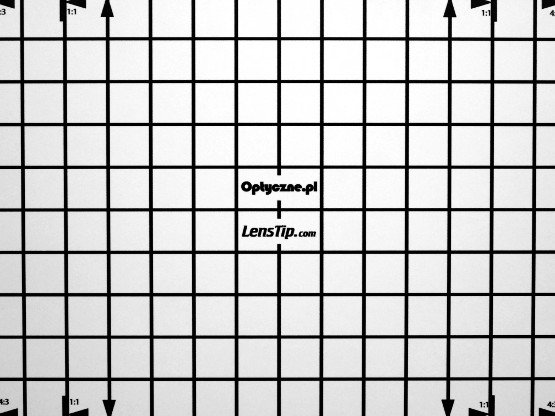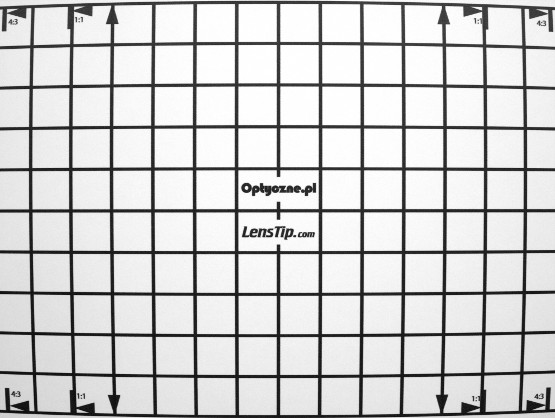Panasonic Leica DG Summilux 25 mm f/1.4 ASPH.
6. Distortion
Please Support UsIf you enjoy our reviews and articles, and you want us to continue our work please, support our website by donating through PayPal. The funds are going to be used for paying our editorial team, renting servers, and equipping our testing studio; only that way we will be able to continue providing you interesting content for free. |
- - - - - - - - - - - - - - - - - - - - - - - - - - - - - - - - - - - - - - - - - - - - - - - -
When we take photos in the JPEG format the camera corrects distortion automatically. Its level, in such a case, is imperceptible; our measurements determined it as –0.22%.
How the optics really corrects the distortion (and this is, after all, the right thing to be assessed in a test of a lens) is shown by RAW files, developed by an independent program, like dcraw, used by us. Here the distortion is much more pronounced – quite distinct “barrel” which level we determined as –2.30%. It is hardly an imperceptible value but not a serious reason to complain either. The results on a level of –2% on full frame had also many 1.4/50 class lenses. In their cases it is easier to correct the distortion, though, because of a longer focal length and a bigger distance from the optics to the sensor. To keep the balance we can also remind here the result of the 4/3 system Leica 1.4/25, which was slightly lower than –1%.
| Olympus E-PL1, JPEG | |||

|
|||
| Olympus E-PL1, RAW | |||

|
|||






